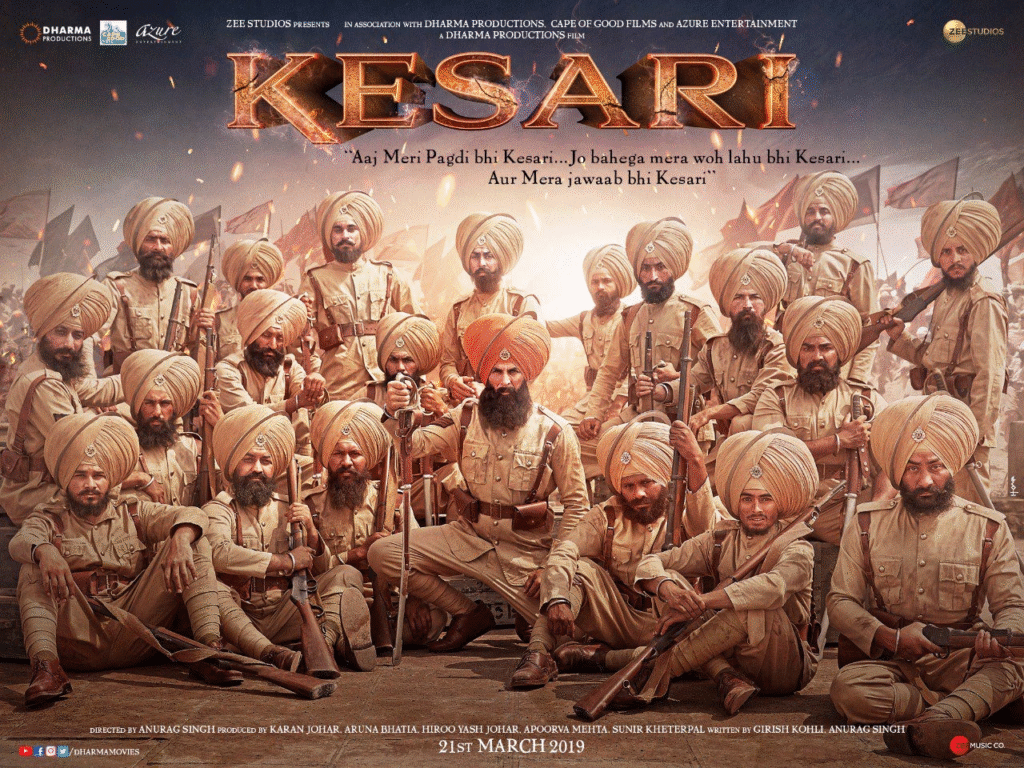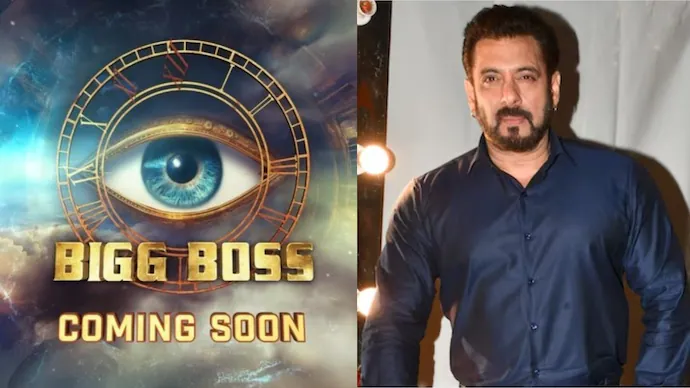Discover the true story behind Akshay Kumar’s Kesari. Read about the real Battle of Saragarhi where 21 Sikh soldiers fought 10,000 Afghans in 1897.
Kesari: The Immortal Tale of 21 Sikhs at Saragarhi – A True Battle Against All Odds
Kesari Movie True Story: The Battle of Saragarhi – 21 Sikhs vs 10,000 Afghans
The Day Courage Wore a Turban
Before there were fighter jets and surgical strikes, there were brave men with bayonets and turbaned pride who stood ground in the most legendary last stand ever recorded.
On September 12, 1897, in the rugged hills of present-day Pakistan, 21 soldiers of the 36th Sikh Regiment held their post against 10,000 Afghan tribal warriors at Saragarhi, refusing to retreat or surrender.
Kesari (2019), starring Akshay Kumar, resurrects this forgotten tale of valor and martyrdom — a true chapter of Indian military history glorified globally but neglected in our textbooks.
Historical Background: Before the Battle
Geopolitical Setting:
- Region: North-West Frontier Province (now in Pakistan)
- Colonial Context: British India was fending off constant tribal uprisings from Pashtun Afghan tribes.
- Strategy: A communication relay was essential between British forts Lockhart and Gulistan.
- The relay station: Saragarhi – A small signaling post manned by 21 soldiers.
Regiment:
- Unit: 36th Sikh Regiment (later 4th Battalion of the Sikh Regiment)
- Commander at Saragarhi: Havildar Ishar Singh – A seasoned and fearless leader
- British Officers: None stationed at Saragarhi during the attack
The Battle of Saragarhi: What Really Happened
Date: September 12, 1897
Location: Saragarhi post, Samana range, NWFP
Attack Begins:
- At 9 AM, over 10,000 Afghani tribesmen advanced toward the fortified but understaffed outpost.
- The Sikh soldiers refused to surrender despite being outnumbered nearly 500:1.
- The men, armed with single-shot Martini-Henry rifles, took defensive positions behind walls and gun slits.
Key Events:
- Signal communication kept transmitting updates to Fort Lockhart.
- Sepoy Gurmukh Singh continued relaying updates via heliograph even as the walls fell.
- Enemy breached the wall by 3 PM. A hand-to-hand battle ensued.
- Ishar Singh died fighting at the gate, reportedly killing many before his death.
- Gurmukh Singh was the last to fall, setting the signal station on fire before charging out and being martyred.
Outcome:
- All 21 Sikh soldiers were killed in action.
- At least 600 enemy fighters were estimated to have died.
- The Afghans failed to capture Fort Lockhart or Gulistan, as reinforcements arrived.
Aftermath and Recognition
- The British Indian government posthumously awarded all 21 soldiers the Indian Order of Merit (Class I) — the highest gallantry award available to Indian soldiers at the time.
- The Battle of Saragarhi Day (September 12) is commemorated every year in Punjab and by the Sikh Regiment.
British Parliament’s Statement:
“One of the greatest and noblest examples of military valor.”
UNESCO’s Recognition:
The battle is listed among the top eight stories of collective bravery in world history.

Kesari (2019): The Film Adaptation
Basic Info:
- Director: Anurag Singh
- Lead Actor: Akshay Kumar as Havildar Ishar Singh
- Lead Actress: Parineeti Chopra (cameo)
- Production: Dharma Productions, Cape of Good Films
- Release: March 21, 2019
Box Office:
- Budget: ₹80 crore
- Worldwide Gross: ₹207 crore
- Declared a blockbuster hit
Film Theme:
- Pride in Sikh bravery
- Emphasis on sacrifice over survival
- Deeply rooted in Indian nationalism
Fact vs. Fiction in Kesari
| Element | Film | Reality |
|---|---|---|
| Ishar Singh punished for insubordination | ✅ | No historical record |
| Romantic subplot with wife | ✅ | Fictionalized for emotion |
| Enemy leader Gul Badshah | ✅ | Name invented for film |
| Orange Kesari flag symbolism | ✅ | True representation of Sikh pride |
| Deaths and sequence of fight | ✅ | Close to historical accounts with dramatization |
While dramatized, Kesari respects the soul of the story — the essence of bravery, duty, and martyrdom.
Character Study: Havildar Ishar Singh
- A disciplined and religious man
- Known for his unshakable commitment to duty
- Led his men with inspiration and grit, rallying them to fight until their last breath
- Became the face of Sikh valor, remembered with reverence in Sikh communities globally
Akshay Kumar’s portrayal is gritty and heartfelt, bringing quiet rage and fearless calm to the role.
Cinematography and War Choreography
- War scenes choreographed with martial realism
- Use of close-up bayonet combat to reflect desperation
- The Kesari (saffron) turban symbolically used to showcase bravery and martyrdom
- BGM by Tanishk Bagchi and Arko adds a stirring patriotic tone
The final 30-minute war sequence is a masterclass in tension, grit, and emotional payoff.
Real Sources of History
The Battle of Saragarhi was recorded in:
- British Indian Army dispatches
- Writings of Captain Haughton (commanding officer at Fort Lockhart)
- Sikh military folklore
- Accounts from Pashtun tribes in NWFP oral histories
Sadly, Indian textbooks and mainstream education have largely ignored this epic tale — a gap the movie aims to fill.
Strategic Impact of the Battle
- Delayed Afghan control over the frontier
- Allowed British forts to reinforce and retain control of the Samana region
- Became a military morale booster in India and abroad
- Inspired future generations of Sikh warriors in both WWI and WWII
Lesser-Known Facts About the Battle
- The post didn’t even have a backup wall — the defenders fought till the wall was breached.
- Gurmukh Singh, the youngest soldier, was only 19 years old.
- The battle is remembered every year in the British Army’s Sikh regiments.
- The Afghan tribes respected the bravery of the Sikhs and allowed proper cremation.
- The British Army’s official records called it “an engagement equivalent to Thermopylae.”
Legacy in Indian Army and Pop Culture
- The 4th Sikh Battalion still commemorates Saragarhi Day annually.
- Inspired other works like:
- TV series: 21 Sarfarosh: Saragarhi 1897
- Short films, plays, and school events across Punjab
In 2020, the Indian Army opened Saragarhi Memorial Gurudwara near the battle site.

Real Quotes from Soldiers (as per records)
“We die not for fame or glory, but because it is our duty.”
— Attributed to Havildar Ishar Singh before the final charge
“The enemy is at our door, but I shall not leave my post.”
— Gurmukh Singh’s last message sent via heliograph
Global Recognition
| Country | Acknowledgement |
|---|---|
| UK | Taught in British military schools |
| France | Referenced in military courage symposiums |
| US | Saragarhi mentioned in Sikh veterans’ archives |
| Canada | Memorial events held by Sikh communities |
Timeline Summary
| Date | Event |
|---|---|
| 1887 | Construction of Saragarhi signaling post |
| 1897 | Battle of Saragarhi on September 12 |
| 1902 | 36th Sikh Regiment merges into Sikh Regiment |
| 2019 | Kesari film released |
| 2020 | Saragarhi Memorial at Ferozepur established |
Why Saragarhi Still Matters
- Embodies discipline, loyalty, and unyielding spirit
- Celebrates minority contributions (Sikhs) in military history
- Reflects sacrifice over recognition, duty over ego
- Showcases India’s deep-rooted tradition of military bravery
References and Sources
- “The Frontier Force and the Saragarhi Post” – British Army Archives
- Sikh Regiment Museum, Patiala
- Punjab Gazetteer, 1901
- Anurag Singh interviews, Kesari film promotions
- “Saragarhi: The Forgotten Battle” by Amarinder Singh
- Interviews with Sikh historians and Army officers
The Last Stand That Lives Forever
Kesari is not just a film. Saragarhi is not just a battle.
It is a symbol of what it means to be Indian, to be Sikh, to be a soldier.
In a world obsessed with numbers and outcomes, Saragarhi is about principles, courage, and brotherhood. 21 men stood to die, not because they thought they’d win — but because they believed their duty was greater than their lives.
And that, in any language, in any era, is the truest form of heroism.
Also read: Gunjan Saxena: The Kargil Girl – Soaring Beyond Gender in India’s Skies
Last Updated on Wednesday, May 14, 2025 3:20 pm by Admin









